This apple ginger kombucha is full of fall flavor and bubbly probiotics. With a crisp apple taste paired with the warmth of ginger, this is the perfect drink for a cool autumn day.
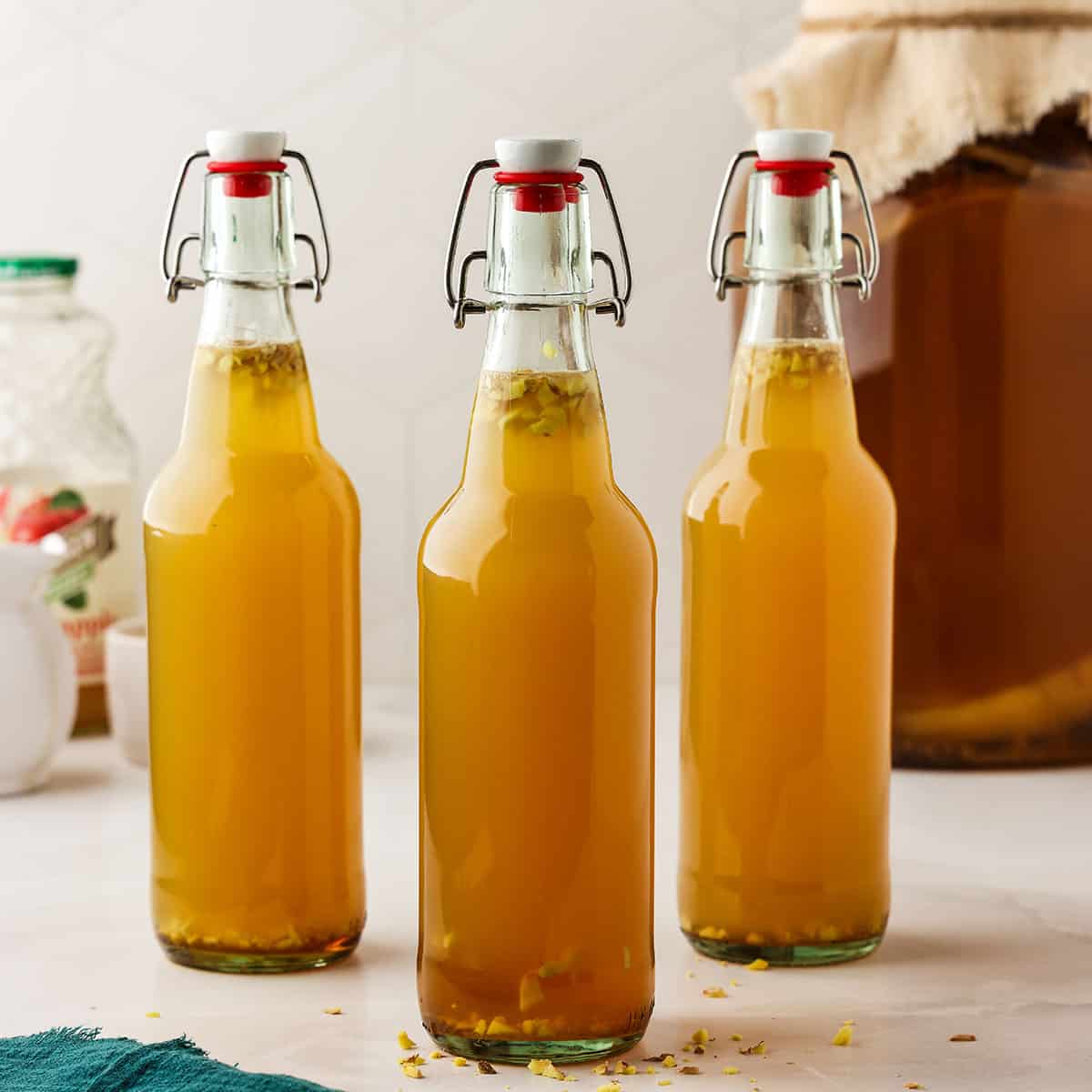
Want to save this post for later?
An Apple Season Best
Apple season is here, and with it comes some of the most delicious treats. I like to add a pinch of health into seasonal traditions, and that’s exactly what this apple ginger kombucha is.
Every fall, there are some apple must-haves that I make every year, like my Grandma’s apple cinnamon cake, spiced apple butter, and fermented apple ginger beer. A golden fall day with a crisp evening calls for apples!

A super easy way to second ferment kombucha is to use juice, so in this recipe, I use fresh apple juice, minced ginger, and maple syrup for the ultimate fall flavor. Crisp apple and warm ginger with maple syrup make a lovely nostalgic drink!
Get recipes for desserts, snacks, breads, side dishes, drinks, and preserving using apples, pumpkins, winter squash, cranberries, and more in my ebook, Cozy Autumn Recipes!
Second Fermentation
This kombucha recipe is a second fermentation, meaning it takes originally brewed kombucha and flavors it with a second fermentation process. In this case the flavor is apple and ginger.
The first kombucha brew can be made with black tea or green tea, which both require a SCOBY (Symbiotic Colony of Bacteria and Yeast).
I won’t get too into it here, but SCOBYs are basically slimy pancakes of goodness, and they have babies, which make a wonderful gift to give your fellow kombucha enthusiasts or novices looking to brew.
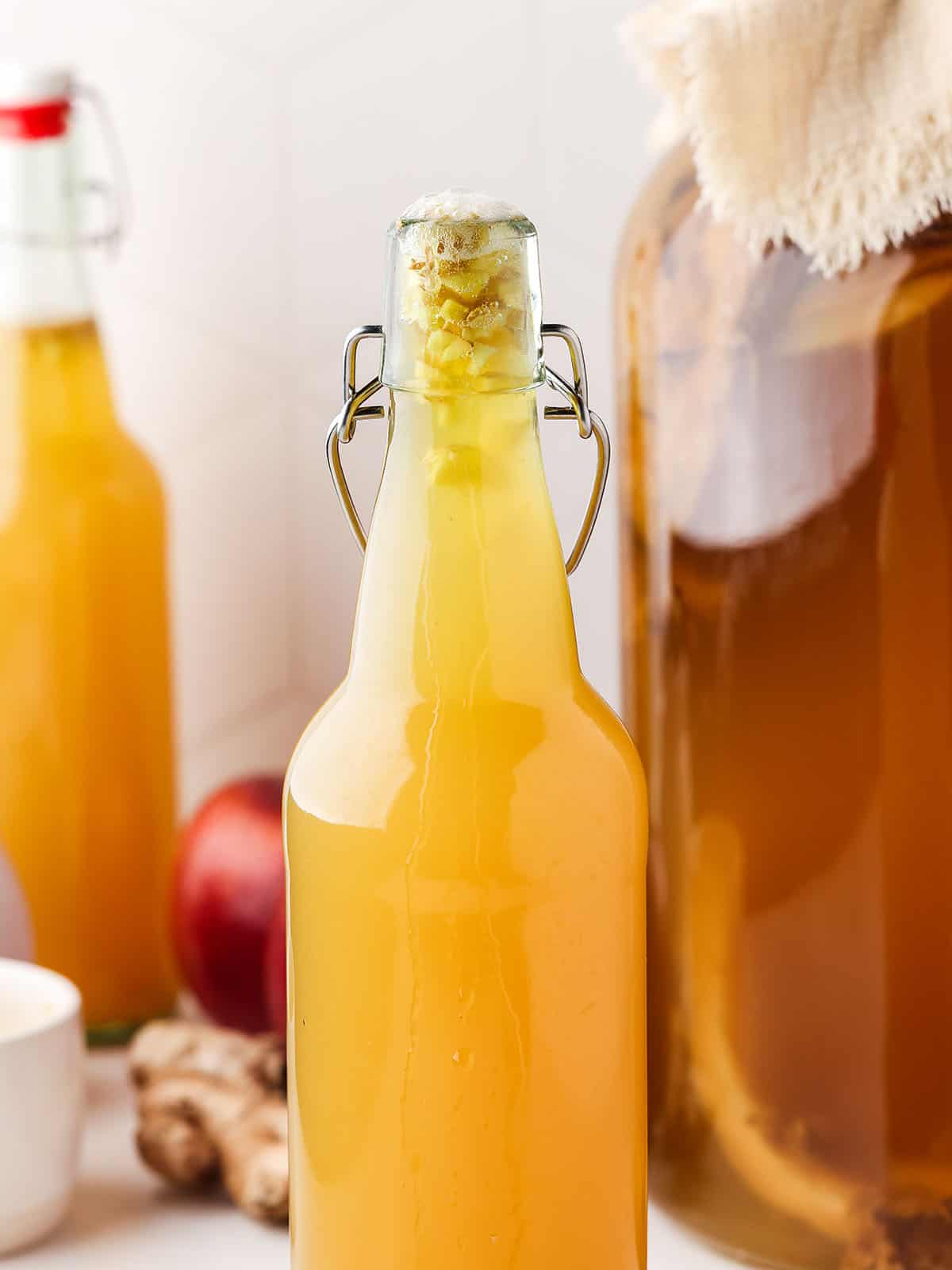
Second fermenting kombucha requires some type of sugar. The bacteria and yeast metabolize the sugar and create bubbles. This recipe uses maple syrup, perfectly complimenting the apple and ginger flavors.
If you’re worried that this is a health drink turned sugar-laden fall treat, don’t fret. The fermentation process works its magic, and instead of sugar, you get fizz! This tasty kombucha will be healthy and full of probiotics.
Apple Ginger Kombucha Recipe
This recipe makes about eight bottles of kombucha. I used green tea kombucha since it has a light flavor and it can really capture the apple and ginger nicely. However, it’s also okay to use black tea kombucha.
Ingredients
Fermented kombucha: To fuel the second ferment, use a first brew kombucha with either green tea or black tea.
Fresh ginger: Great for flavor, health benefits, and fermentation, peel and finely mince fresh ginger.
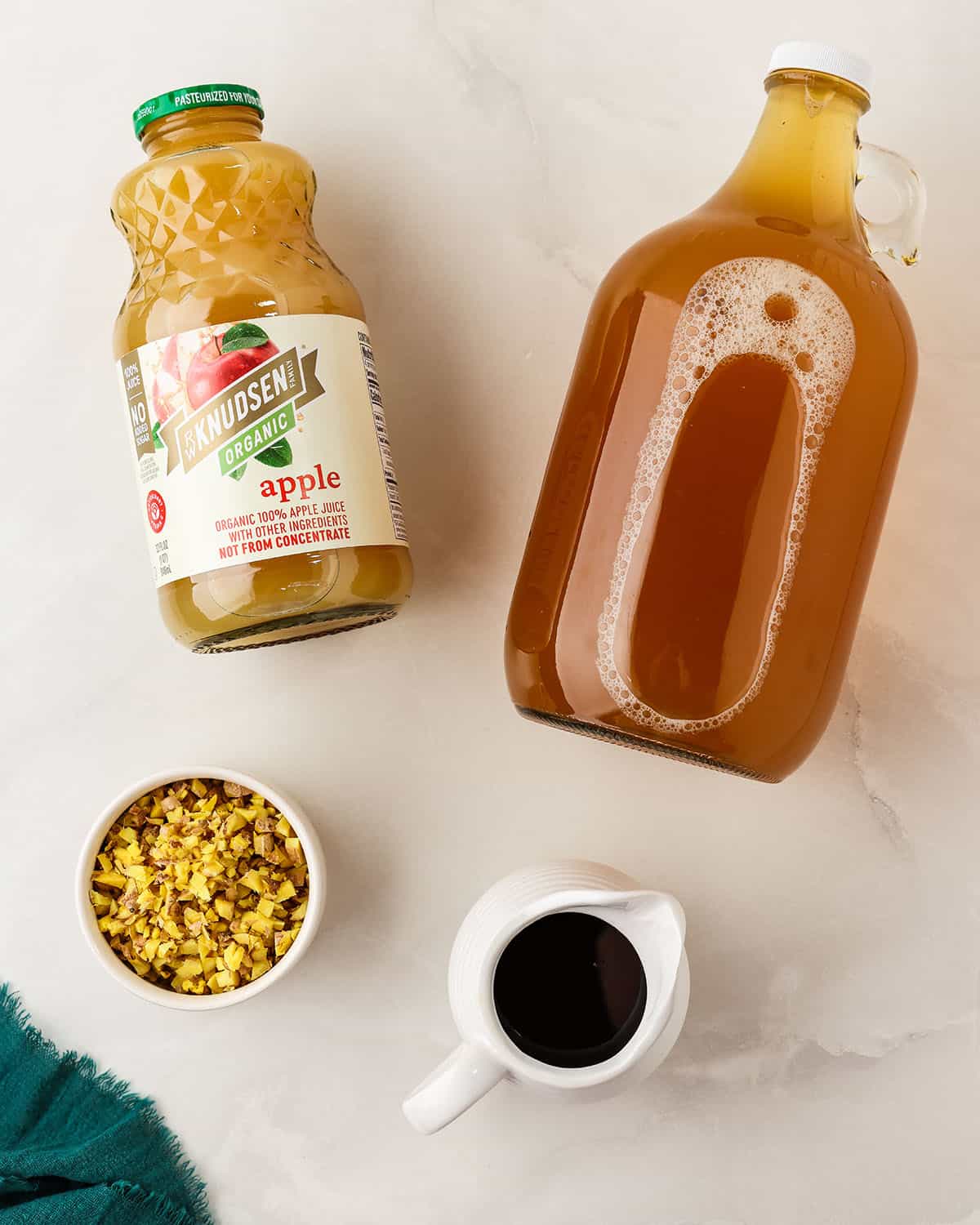
Pure maple syrup: To add the perfect flavor to fuel the ferment, use pure maple syrup that comes from a tree. Use either honey or granulated sugar to substitute.
Apple juice: Use either fresh or store-bought juice for this recipe. I opt for organic if I buy from the store because I prefer it, and I don’t want any chemicals to hinder the fermentation.
How to Second Ferment Apple Kombucha
Gently swirl the first fermented kombucha to distribute the yeast evenly. Then, using a funnel, pour one cup of the kombucha into each bottle.
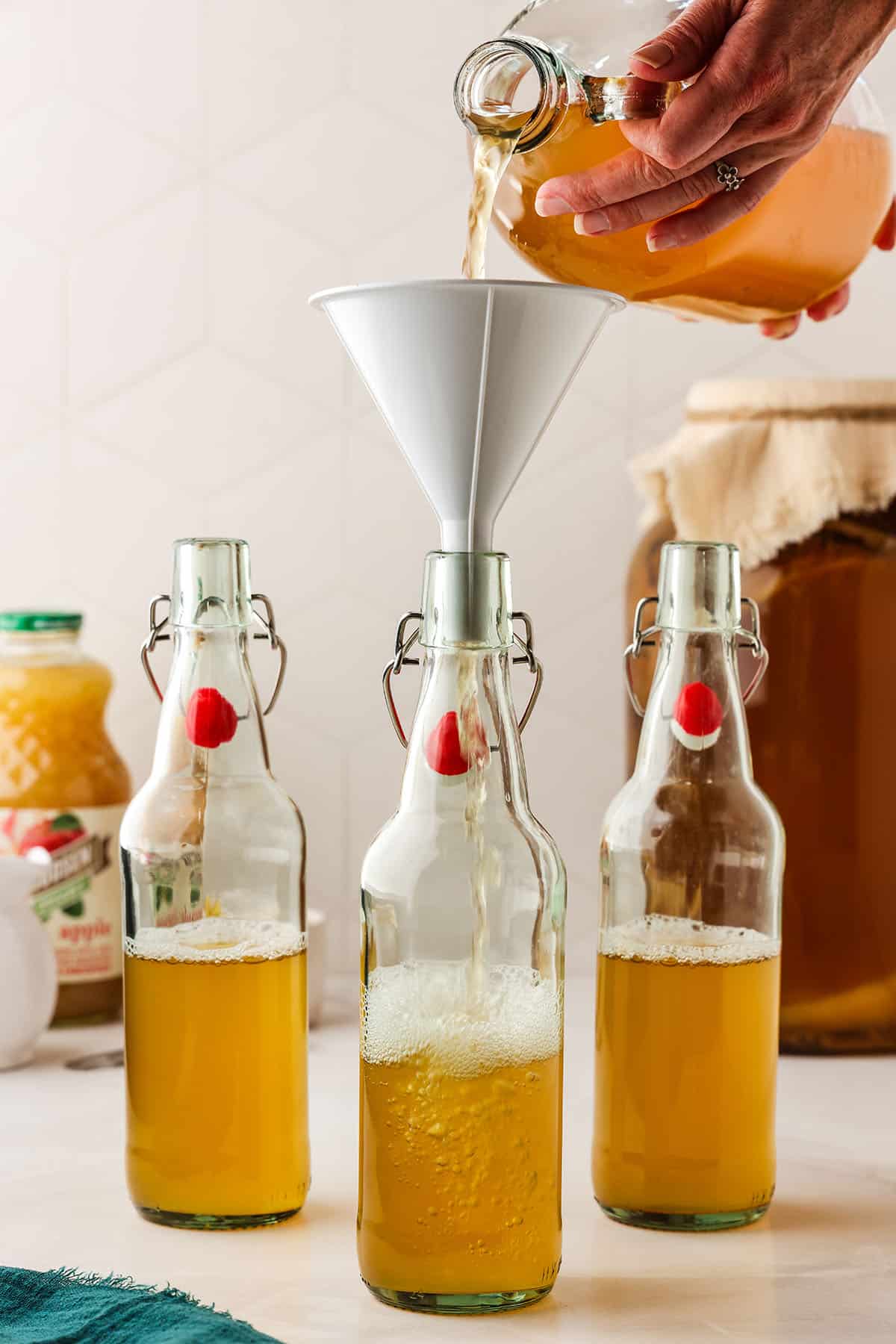
Add one teaspoon of minced ginger and one tablespoon of maple syrup to each bottle.
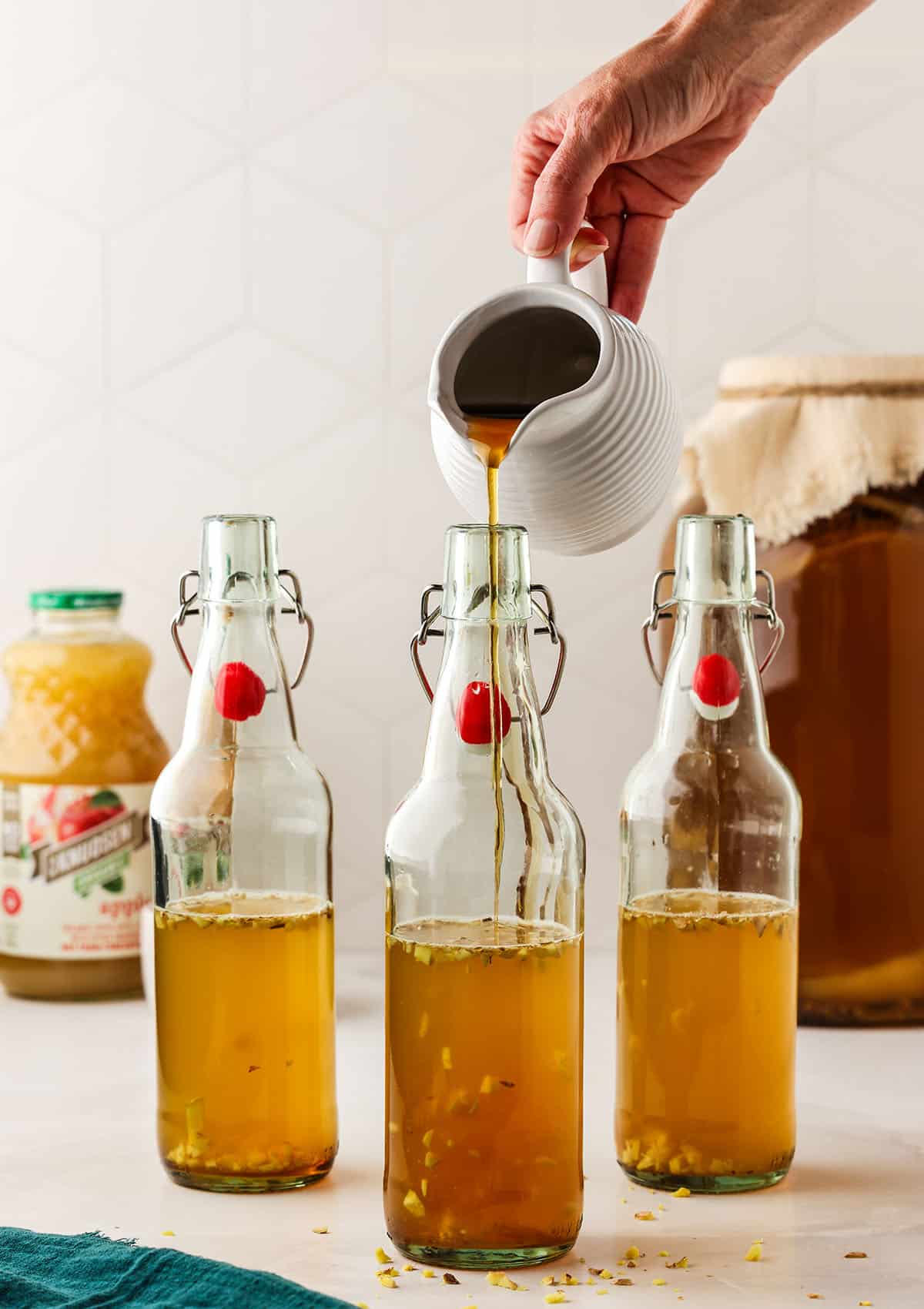
Note: It’s okay to use honey or regular sugar instead of maple syrup if you prefer.
Then, fill each bottle with the apple juice, leaving about an inch of head space at the top. The space allows room for the carbonation to build up during the second fermentation process.
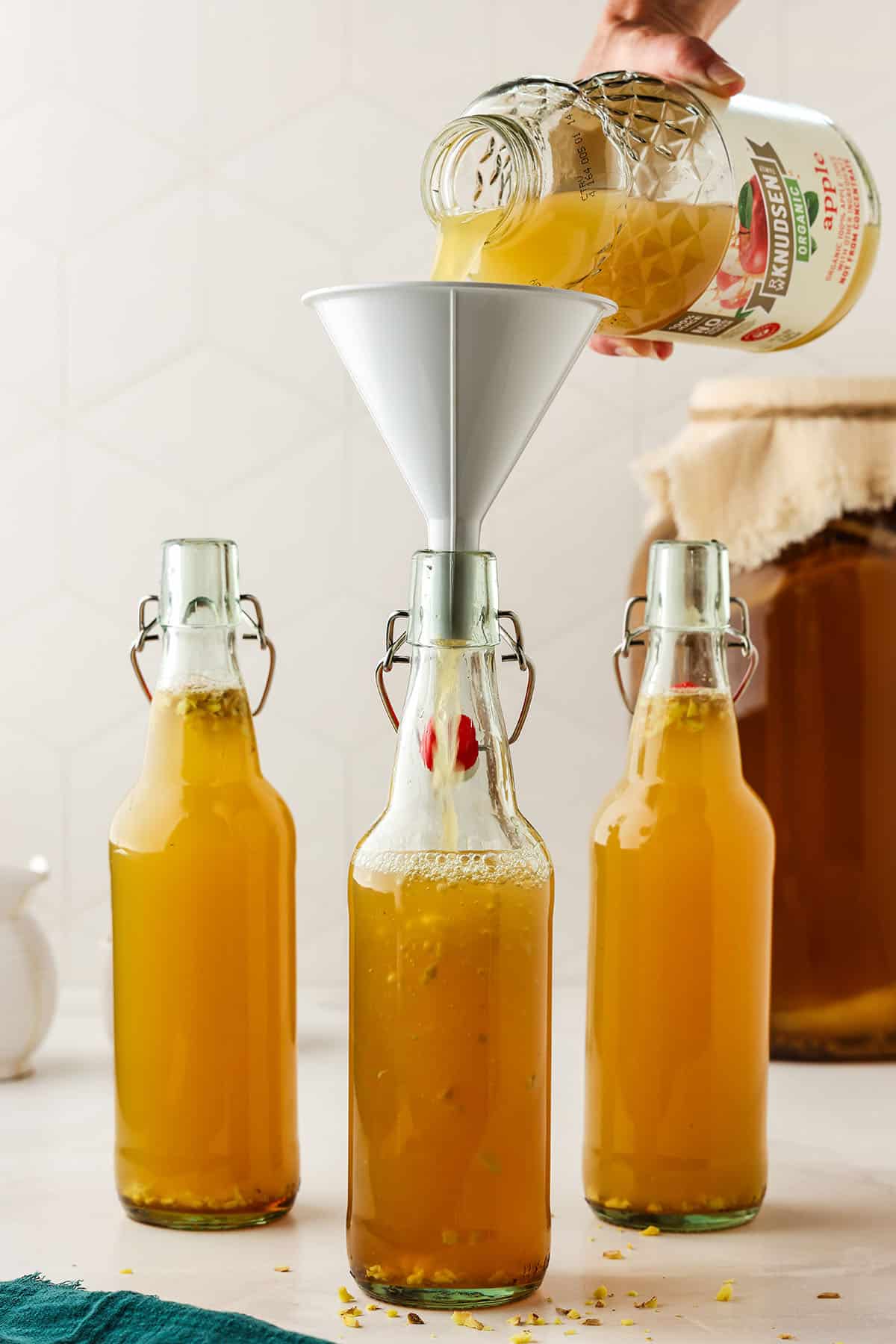
Seal the bottles and shake them gently to mix the syrup until it dissolves.
Fermenting Magic Time
Place the bottles in a room that is out of direct sunlight and where you will remember to check on them daily. It’s always a good idea to set a reminder during this time. Out of sight, out of mind is real!
Note: When checking the bottles, gently turn them upside down to infuse the ginger because it will float to the top.
As the fermentation process occurs, you will notice little bubbles forming at the top, and the yeasts will float. Check the bottles and “burp” them at least once daily to release pressure.
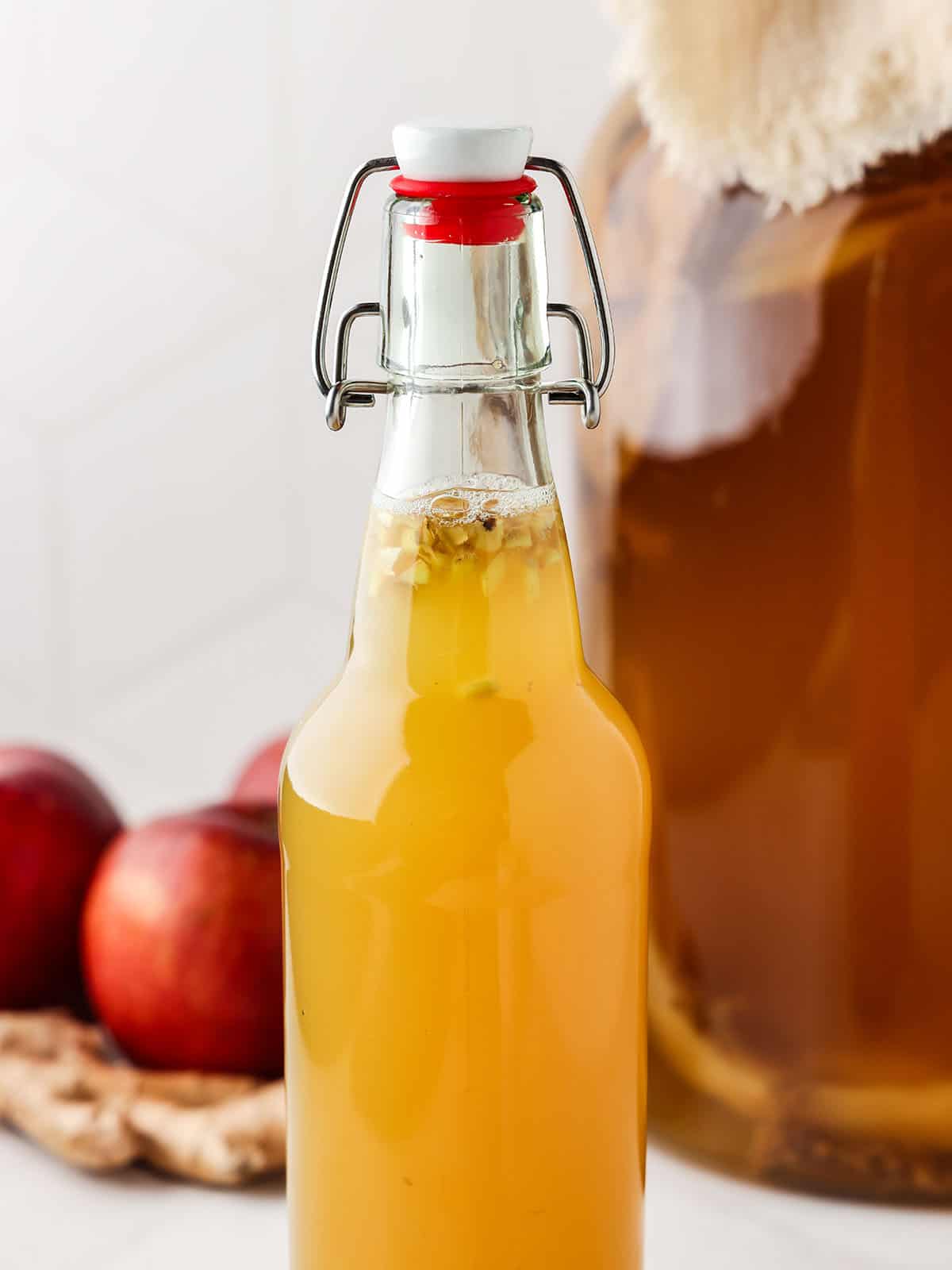
If there is built-up pressure and the bubbles race to the top, then move the bottles to the refrigerator. Refrigeration slows the process and keeps the kombucha from exploding under pressure.
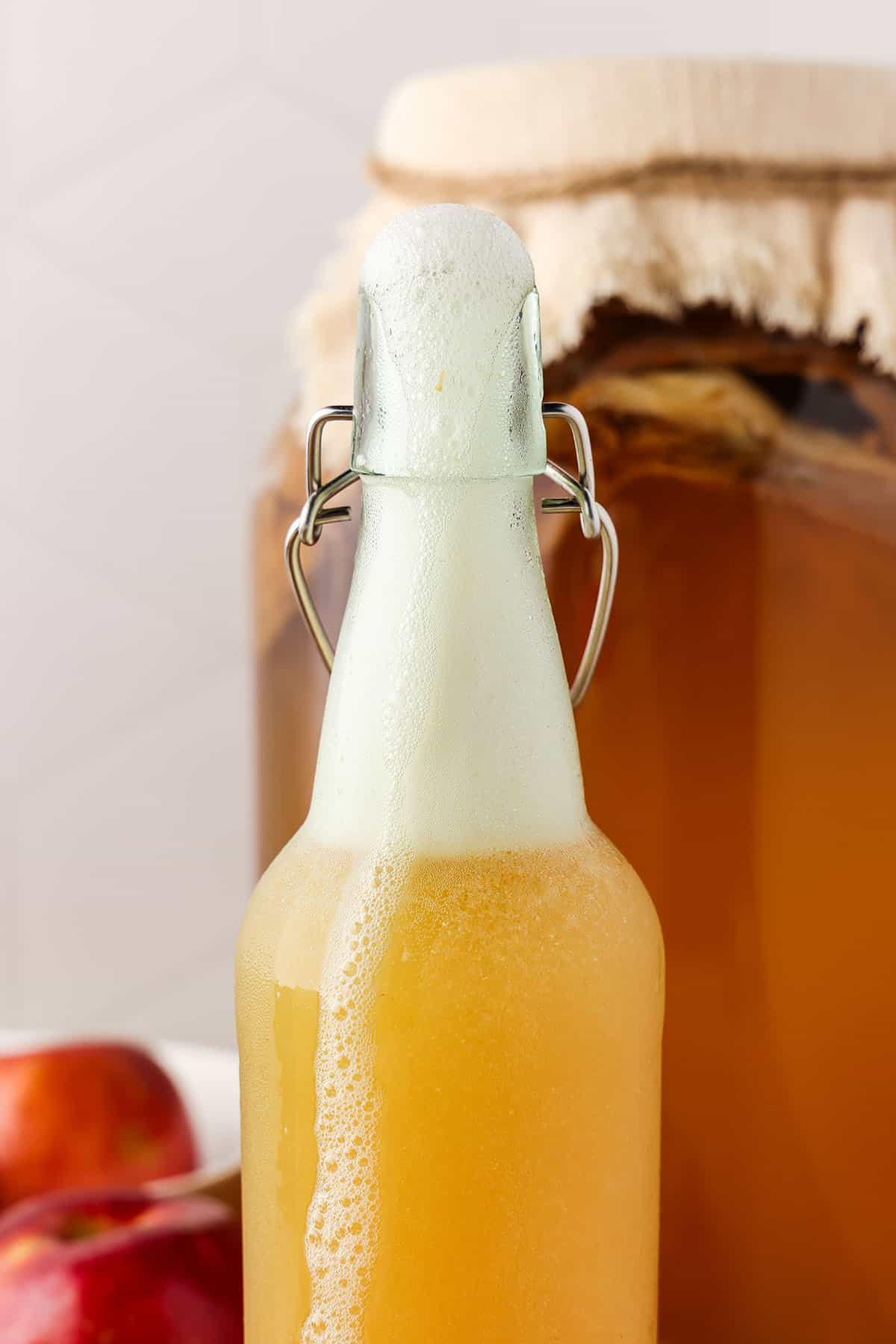
Depending on the ambient air temperature, this can take around 5 to 10 days. If your weather is cooling down, expect it to take on the longer side.
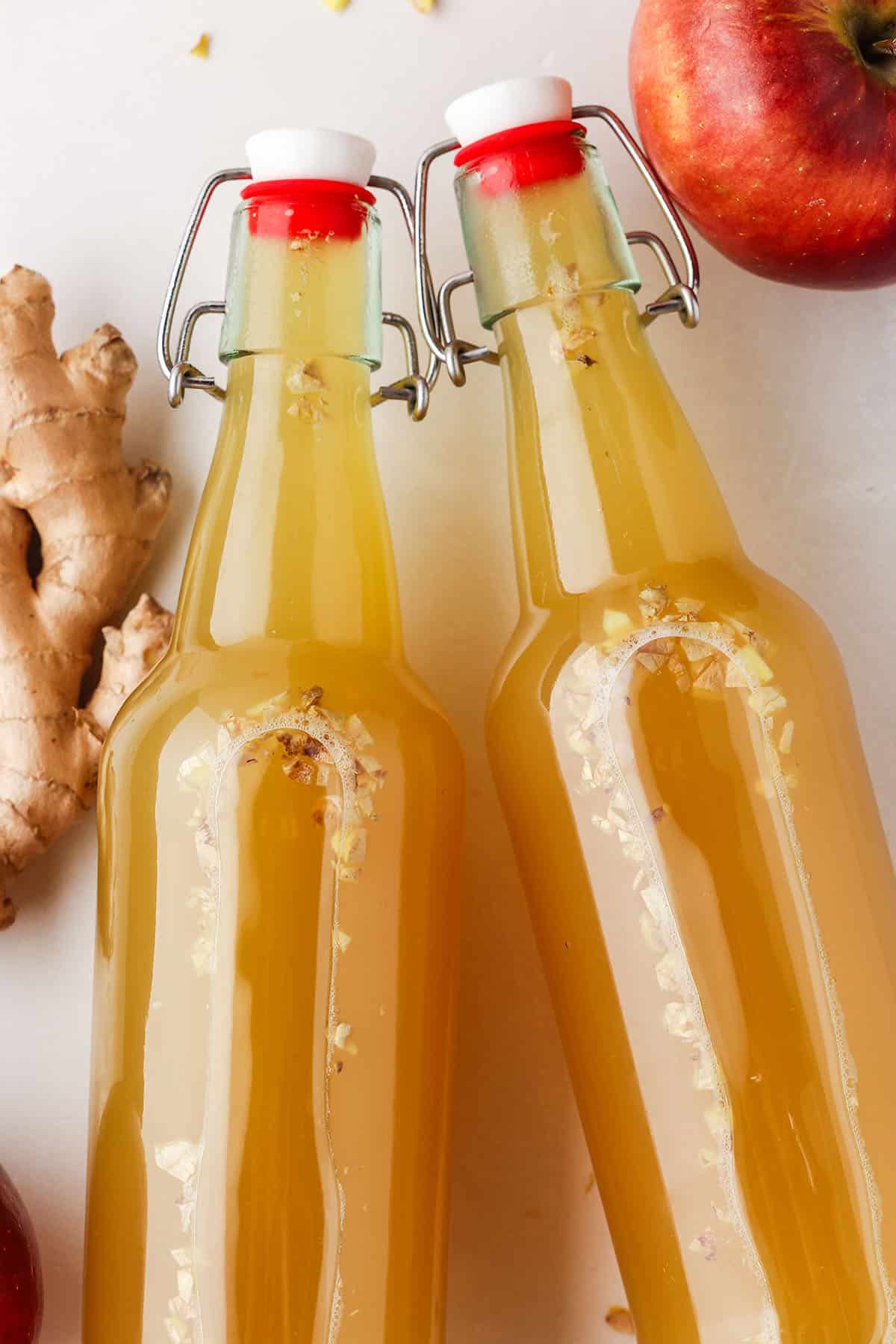
Note: I would recommend that you continue to check your bottles daily until you know how long the fermentation takes in your location.
Once the ferments are done and you’re ready to drink the kombucha, strain out the ginger pieces before serving. It’s okay to leave the ginger in the kombucha, but I like to strain mine out.
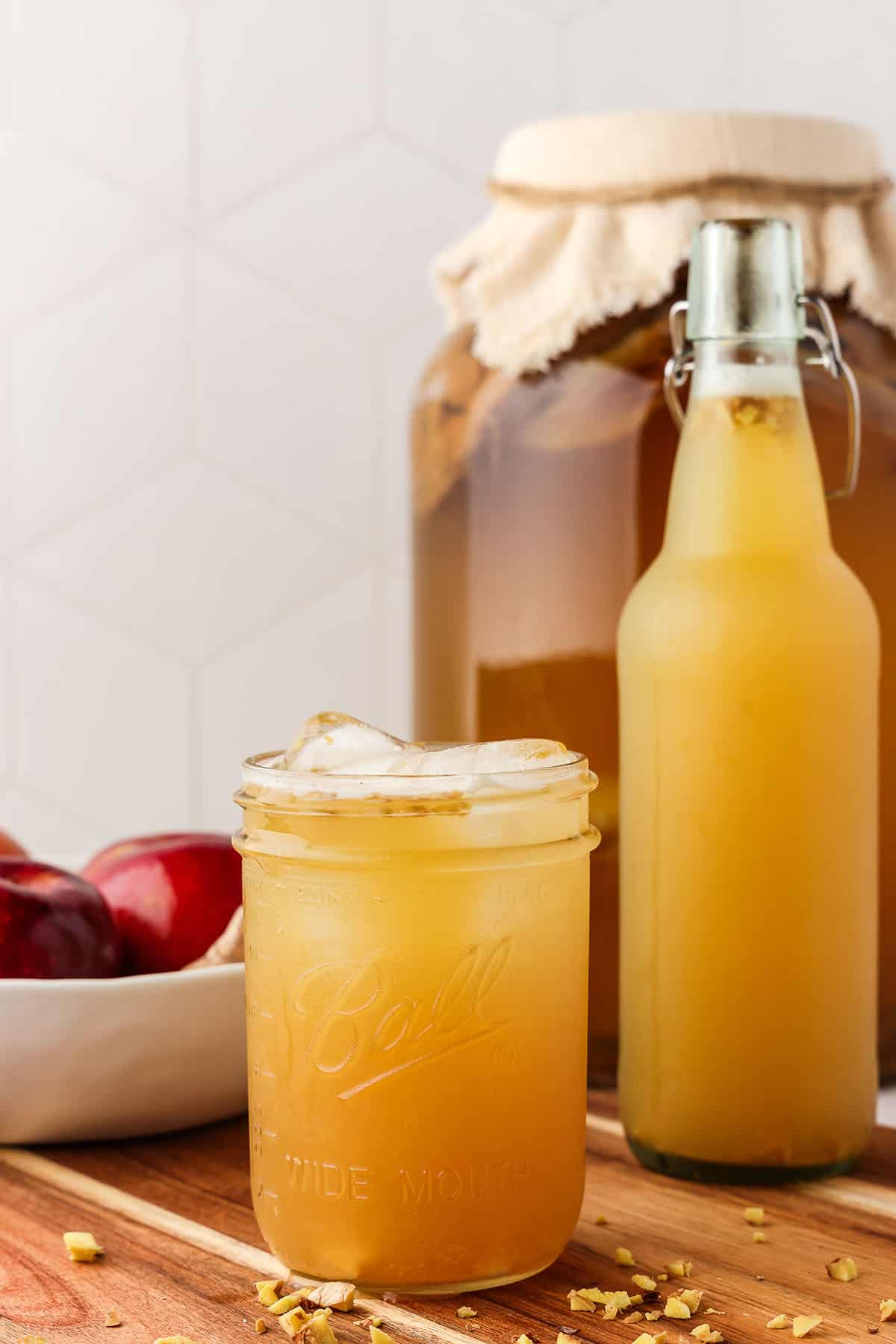
How to Serve Apple Kombucha
This apple ginger kombucha is delicious cold or over ice. I enjoy kombucha as an afternoon drink but drink it whenever you need a fall-inspired treat with tons of health benefits.
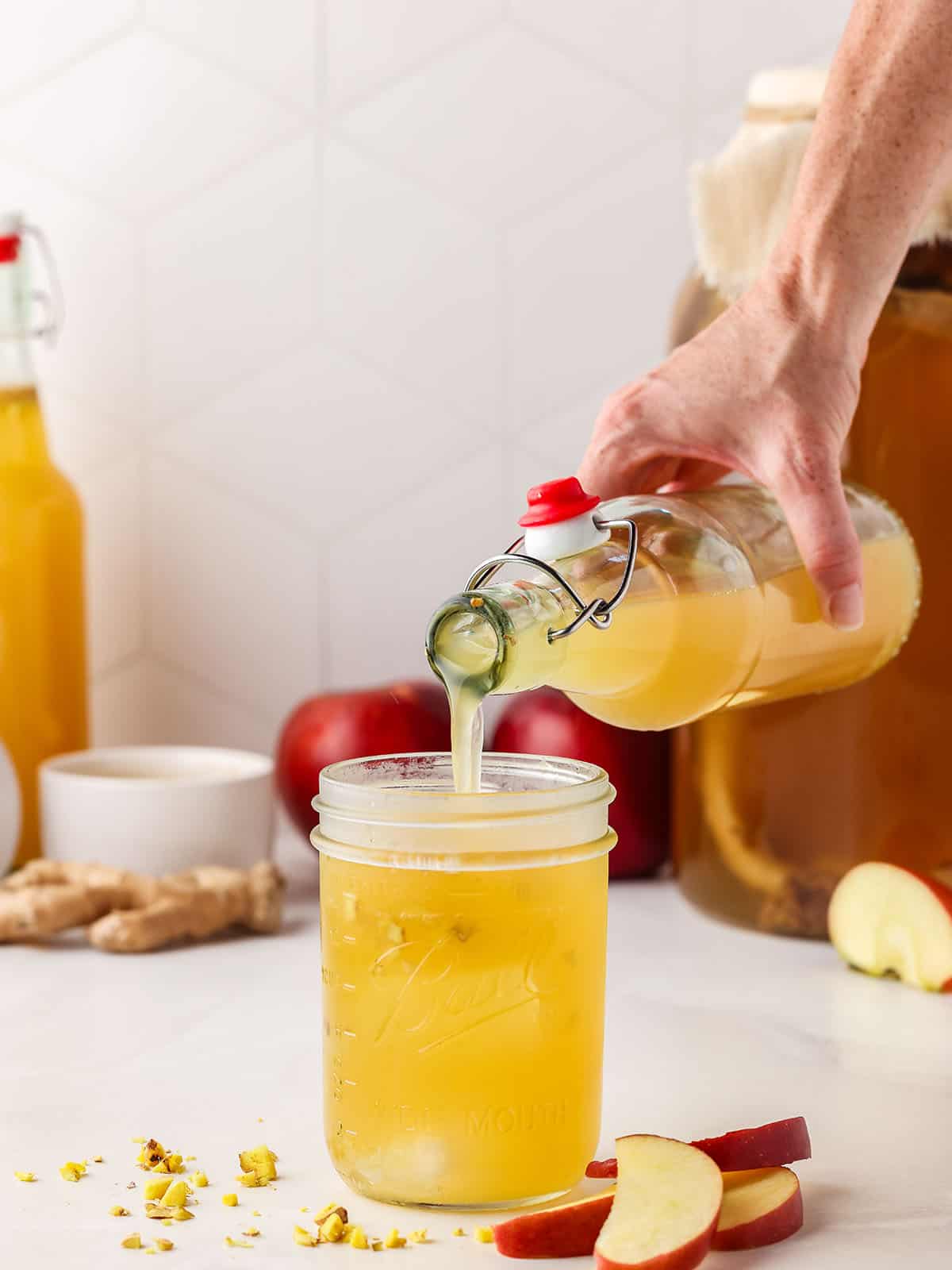
It’s always a good time for probiotics in your diet, but fall turning to winter is an excellent time for a boost. This delicious fizzy drink is a great way to celebrate the season and your health!
More Kombucha Flavors to Make
- Rose Kombucha
- Lavender Kombucha
- Hibiscus Kombucha
- Strawberry Kombucha
- Ginger Kombucha
- Elderberry Kombucha
- Pumpkin Kombucha
- Cranberry Kombucha
Apple Ginger Kombucha
Equipment
Ingredients
- 8 cups fermented kombucha green tea kombucha works well
- 16 teaspoons fresh ginger peeled and finely minced
- 8 tablespoons pure maple syrup
- 8 cups apple juice
Instructions
- Gently swirl the fermented kombucha (from the first fermentation process) to evenly distribute the yeast, then use a funnel to pour one cup of the kombucha into each bottle.
- Add one teaspoon of minced ginger to each bottle.
- Add one tablespoon of maple syrup to each bottle.
- Fill each bottle with the apple juice, leaving about an inch of head space at the top for carbonation to build up during the second fermentation process.
- Seal the bottles and shake them gently to mix the syrup until it dissolves.
- Place the bottles in a room that is out of direct sunlight, and where you will remember to check on them daily.
- As the fermentation process occurs, you will notice little bubbles forming at the top, and the yeasts will float. Check the bottles and “burp” them at least once daily to release pressure. If there is built-up pressure and bubbles race to the top, then move the bottles to the refrigerator. Depending on the ambient air temperature, this can take anywhere from 5 to 10 days.
- Strain out the ginger pieces before serving if you prefer.
Notes
- Green tea kombucha compliments the apple and ginger nicely, but black tea kombucha also works.
- Honey or regular sugar can be used instead of maple syrup if you prefer.
- When checking the bottles, gently turn them upside down to infuse the ginger because it will float to the top.
- When you burp the bottles to release the pressure, check how quickly the bubbles race to the top. If you only see a few bubbles and they are slow to make their way to the top, you can replace the lid and check the next day. If the pressure release is loud and bubbles race to the top, then you know it is time to move that bottle to refrigeration!
- In cooler weather, kombucha takes longer to ferment. In warmer weather, the process goes much faster.
- Refrigeration slows the process, keeping the kombucha from exploding under pressure.

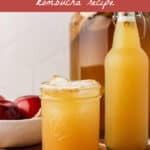
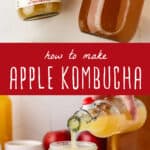
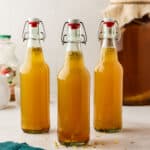

Thank you! I am new to the kombucha world and am looking forward to trying this recipe.